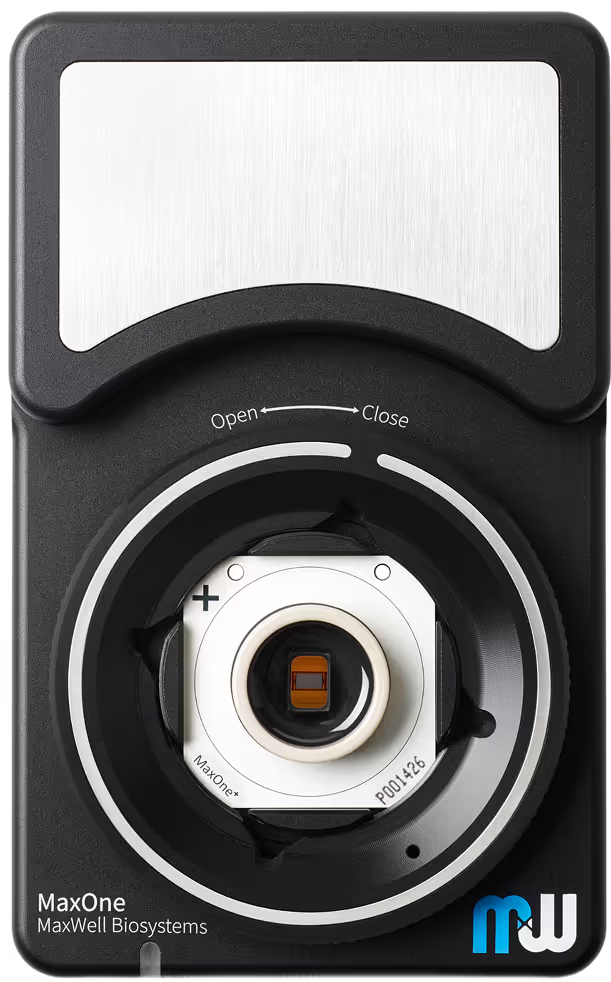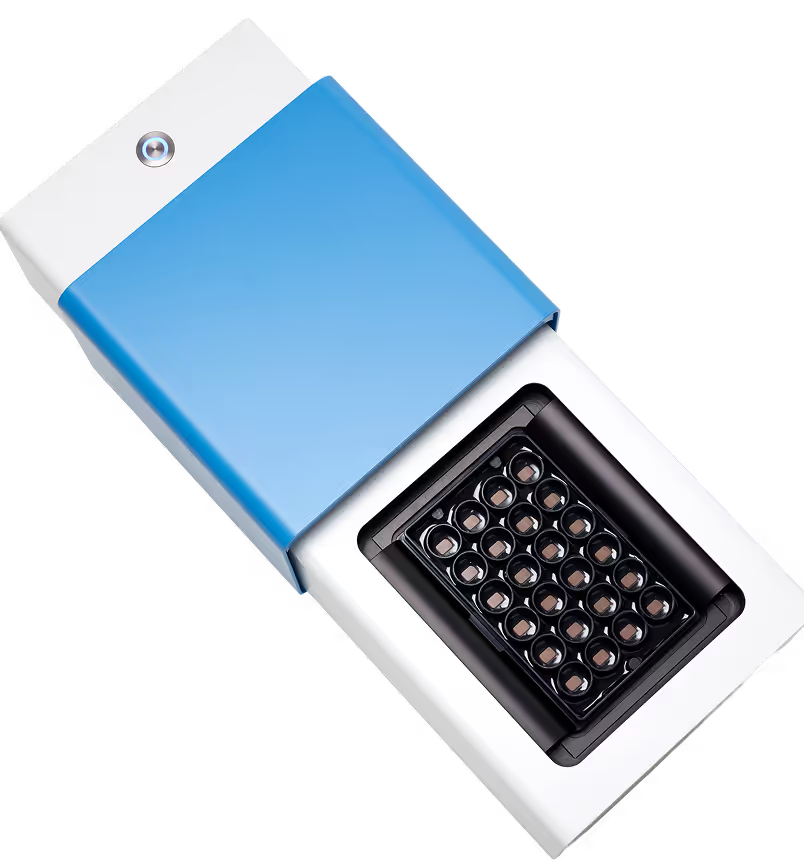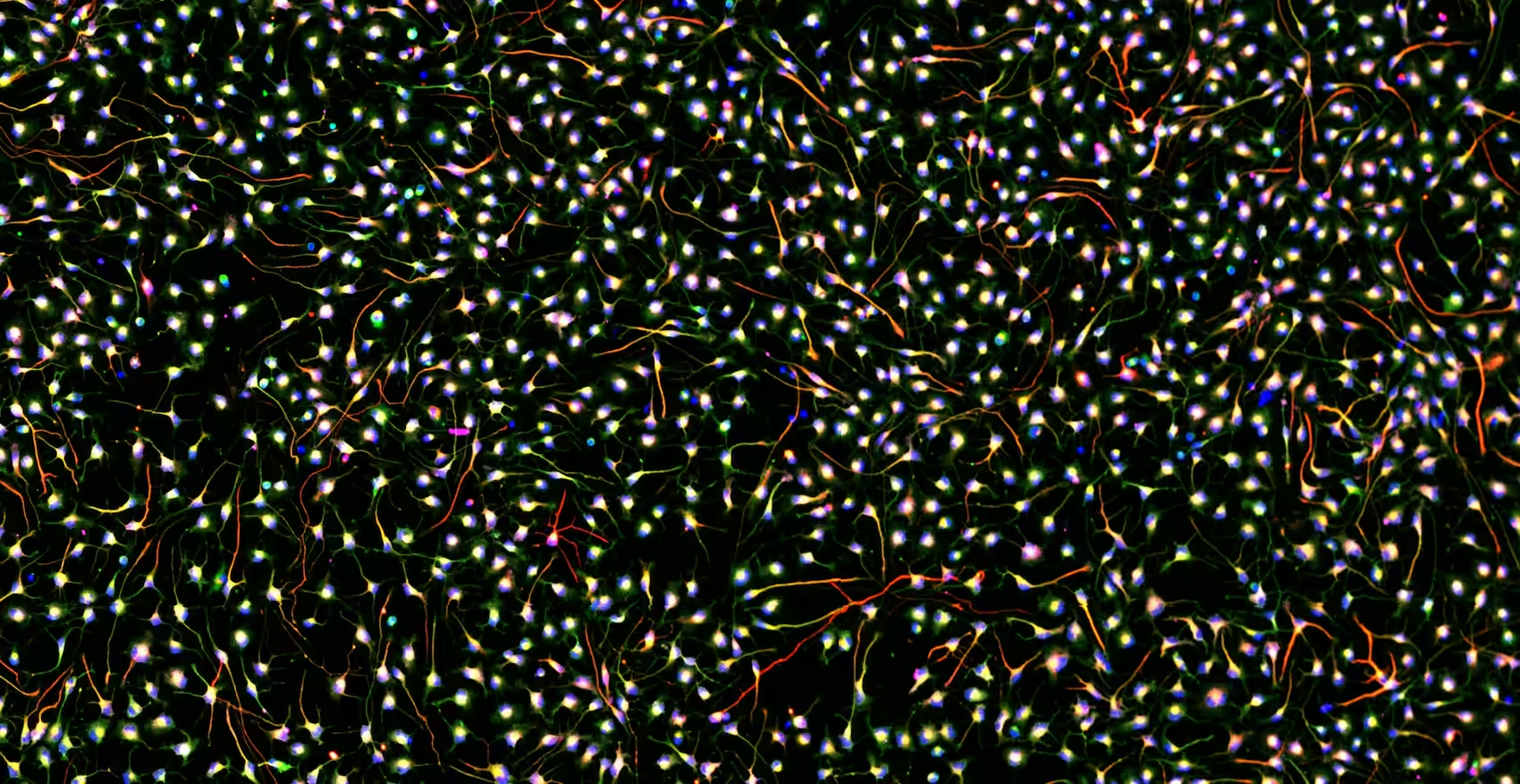
Neuronal Cell Cultures
Every Cell has a Story to Tell.
Let’s Discover Yours
Neuronal cell cultures are powerful in vitro models for investigating development, connectivity, and dysfunction of the nervous system. But to truly understand how neurons behave, you need more than structure; you need their detailed function.
Our High-Density Microelectrode Array (HD-MEA) technology captures rich, reproducible functional data at subcellular, single-cell, and network levels, providing you with scalable workflows to reveal subtle phenotypes, track maturation, and confidently screen compounds with ease and precision.

Complete the picture of your neuronal activity
Get more meaningful data on how your neurons fire, connect, and mature, going beyond standard assays with rich functional readouts at subcellular, single-cell, and network levels thanks to the 26’400 electrode per well.
Reveal hidden action potential insights
Acquire reliable action potentials, from tiniest to strongest, to reconstruct the subcellular axonal behavior of your cells. Uncover novel functional mechanisms and phenotypes others cannot see.
Sensitivity to subtle and unseen phenotypes
Biologically relevant changes are not always obvious. Detect nuanced functional differences other systems might miss, even in sparse, co-cultured or early-stage neuronal models, thanks to our high-resolution and low-noise signal acquisition.
Always at the right spot, never miss a neuron
Record high-quality signals with thousands of electrodes per well, precisely positioned beneath your cells of interest, and capture activity with unmatched resolution.
Reproducibility at the core
Neuronal cell cultures are biologically variable, but your recordings do not have to be. See functional differences that you can trust: engineered for long-term, stable experiments and consistent signal acquisition across sessions.
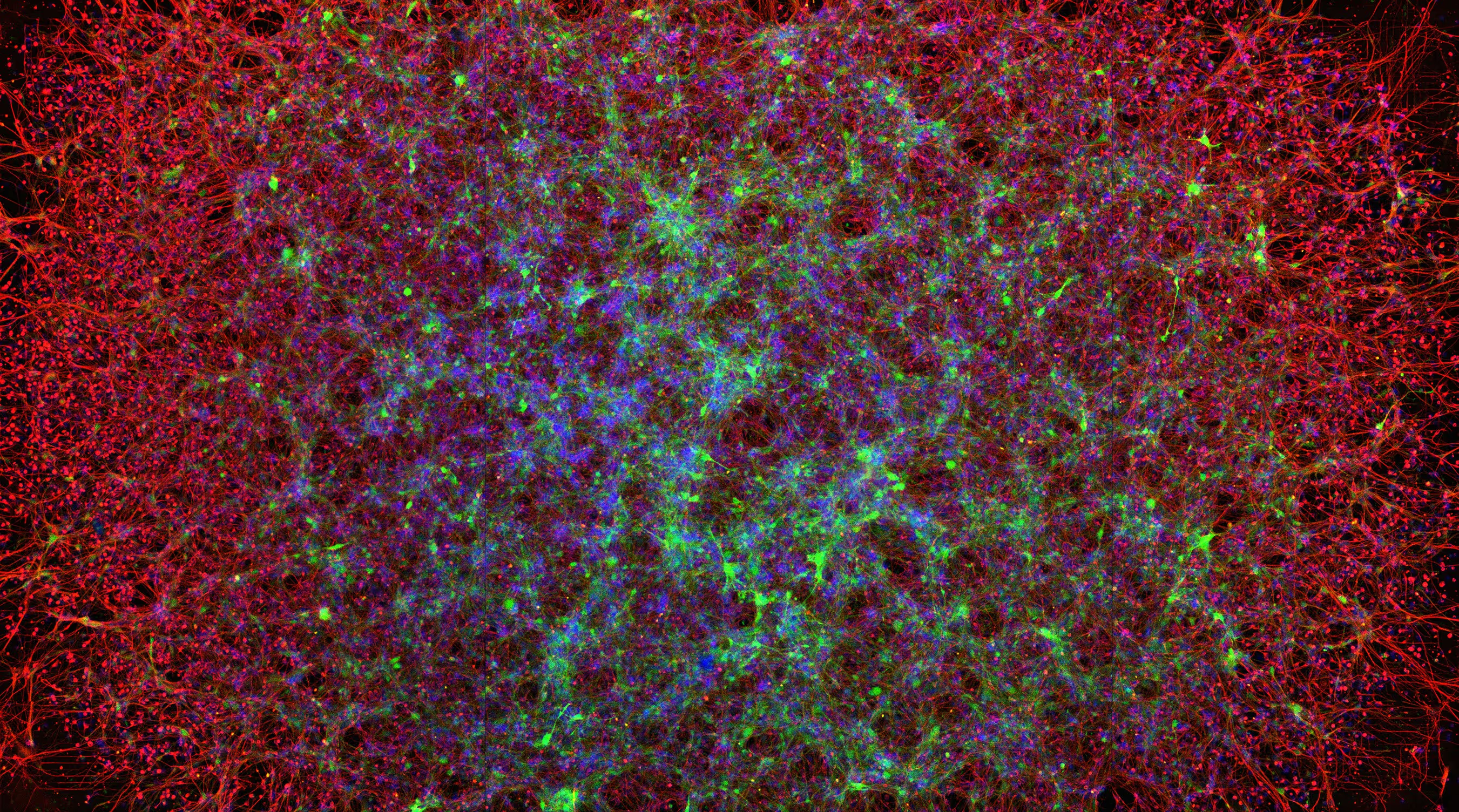
Functional characterization of neuronal cultures
Perform high-resolution electrophysiological recordings across a wide range of neuronal cell cultures, comprising a diverse selection of cell types and modelling diseases, thanks to the MaxOne Single-Well and MaxTwo Multi-Well HD-MEA Systems. With high fidelity and reproducibility, you can characterize the populational network dynamics, whole sample as well as single cell activity, and even subcellularly axonal activity propagation.
Case studies
Comprehensive characterization for a wide range of neuronal culture types
For every neuronal culture model, our HD-MEA Systems are designed to reveal their full functional profile. A range of neuronal cultures are characterized at different levels, from activity across the whole sample at single-cell resolution, population network dynamics, to electrically reconstructed axonal branches, unique to users of our HD-MEA technology.
Example dataset illustrating the multi-scale functional characterization of neuronal cell cultures recorded with our HD-MEAs and analyzed using MaxLab Live.
From left to right: heatmaps show spatial patterns of spiking activity across the culture; raster plots capture temporal dynamics of population bursts; and axonal footprint reconstructions reveal subcellular signal propagation paths for selected, representative neurons in the cell culture.
Data courtesy of multiple MaxWell Biosystems’ users.
Reproducibility for your studies
Capture robust and reproducible phenotypes across healthy and disease conditions with our MaxTwo HD-MEA System. In the panel below, we showcase spontaneous network bursting features originating from FUJIFILM Cellular Dynamics, Inc. (FCDI, Madison, Wisconsin) iPSC-derived control and ALS-associated mutant motor neuron cultures, co-cultured with iCell Astrocytes 2.0 (FCDI) and recorded on a MaxTwo 24-Well Plate.
Functional characterization of ALS-associated TDP43 (FCDI) mutant neurons reveals robust and reproducible phenotypes.
Two iPSC-derived motor neuron lines carrying distinct TDP43 mutations were co-cultured with iCell Astrocytes 2.0 (FCDI) and compared to a control line derived from apparently healthy neurons (AHN), all recorded on a single MaxTwo 24-Well Plate. Raster plots illustrate spontaneous network bursting activity, where each dot represents an action potential, and vertical groupings indicate synchronized firing (network bursts). Both mutant lines exhibited consistent decreases in network synchrony, demonstrating the sensitivity and reproducibility of HD-MEA recordings across wells and genotypes.
Data courtesy of Fujifilm Cellular Dynamics, Inc.
Relevant
Applications
Relevant Biological Models
Resources
A model of human neural networks reveals NPTX2 pathology in ALS and FTLD

Multiplex epigenome editing of MECP2 to rescue Rett syndrome neurons

16p11.2 deletion is associated with hyperactivation of human iPSC-derived dopaminergic neuron networks and is rescued by RHOA inhibition in vitro

MaxOne+ and MaxOne Neuronal Cell Plating Protocol
Follow this easy-to-use neuronal cell plating protocol for MaxOne,ensuring optimal cell growth and attachment with clear step-by-step instructions.
MaxTwo 24-Well Plate Neuronal Cell Plating Protocol
Maximize efficiency with this scalable protocol for high-throughput neuronal cell plating, ensuring best cell attachment and electrophysiology recordings.
MaxTwo 6-Well Plate Neuronal Cell Plating Protocol
Maximize efficiency with this scalable protocol for high-throughput neuronal cell plating, ensuring best cell attachment and electrophysiology recordings.
MxW - Elixirgen Application Protocol
Culturing Human iPSC-derived Mixed Neurons on Multielectrode Arrays: MaxTwo Multiwell MEA
MxW - Neucyte Application Protocol
SynFire®iN plating protocol and chemical long-term potentiation on MaxWell Biosystems Multi-Well High-Density Microelectrode Array (HD-MEA)
MxW - bit.bio Application Protocol
Co-culturing ioMotor Neurons and rat cortical astrocytes for HD-MEA
Dot Plating MaxOne Chip Video Instruction
Just a single tiny drop is all it takes to get the best out of your iPSC-derived neuronal cultures or primary cell cultures on MaxOne Chips.
Dot Plating MaxTwo 6-Well Plate Video Instruction
Just a single tiny drop to get the best from your iPSC-derived neuronal cultures or primary cell cultures on MaxTwo Multiwell Plates.
Whole Area Plating MaxOne Chip Video Instruction
Just a small drop is all it takes to get the most out of your iPSC-derived neuronal cultures or primary cell cultures on MaxOne Chips.
Whole Area Plating MaxTwo 6-Well Plate Video Instructions
Just a small drop to get the best from your iPSC-derived neuronal cultures or primary cell cultures on MaxTwo Multiwell Plates.

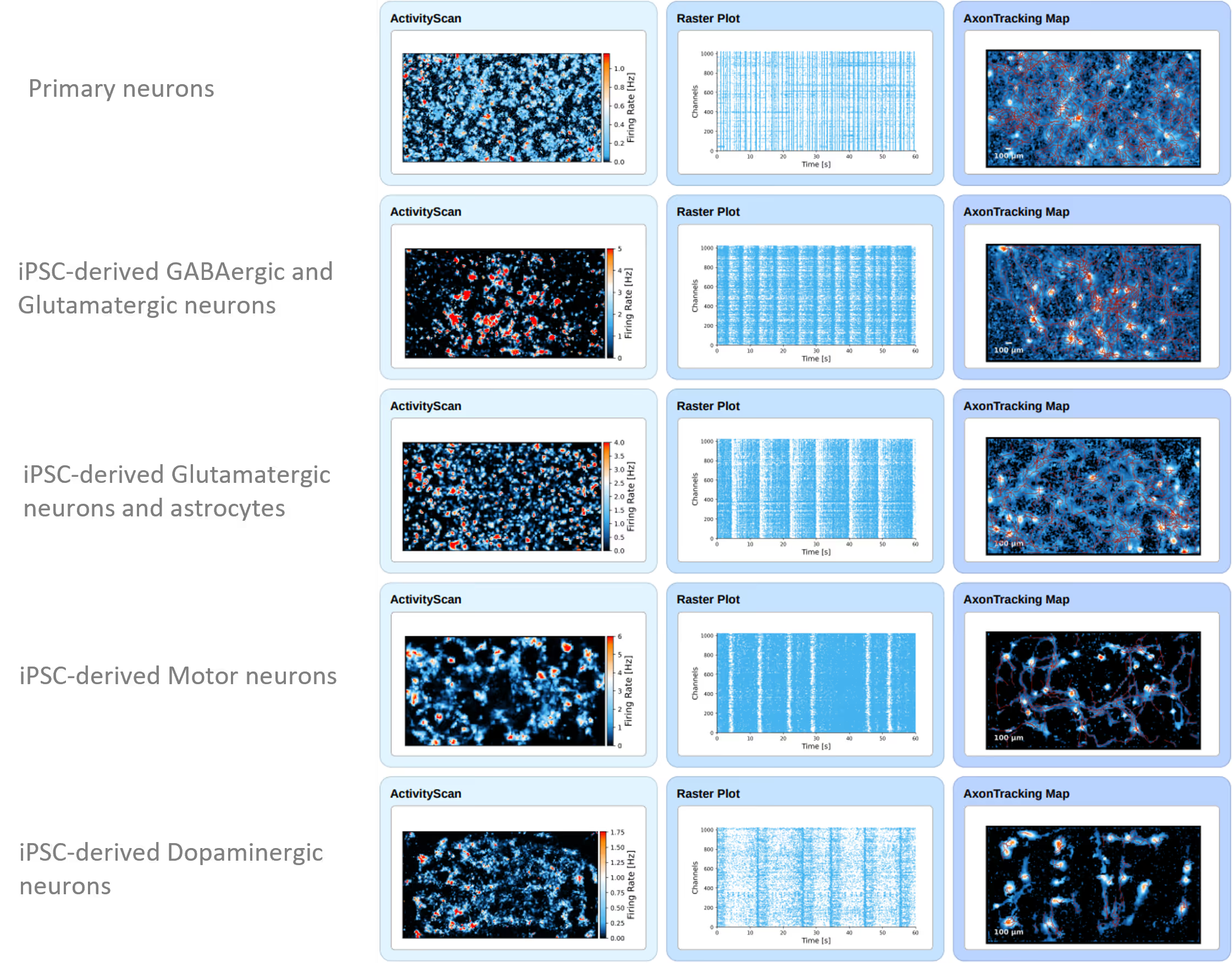

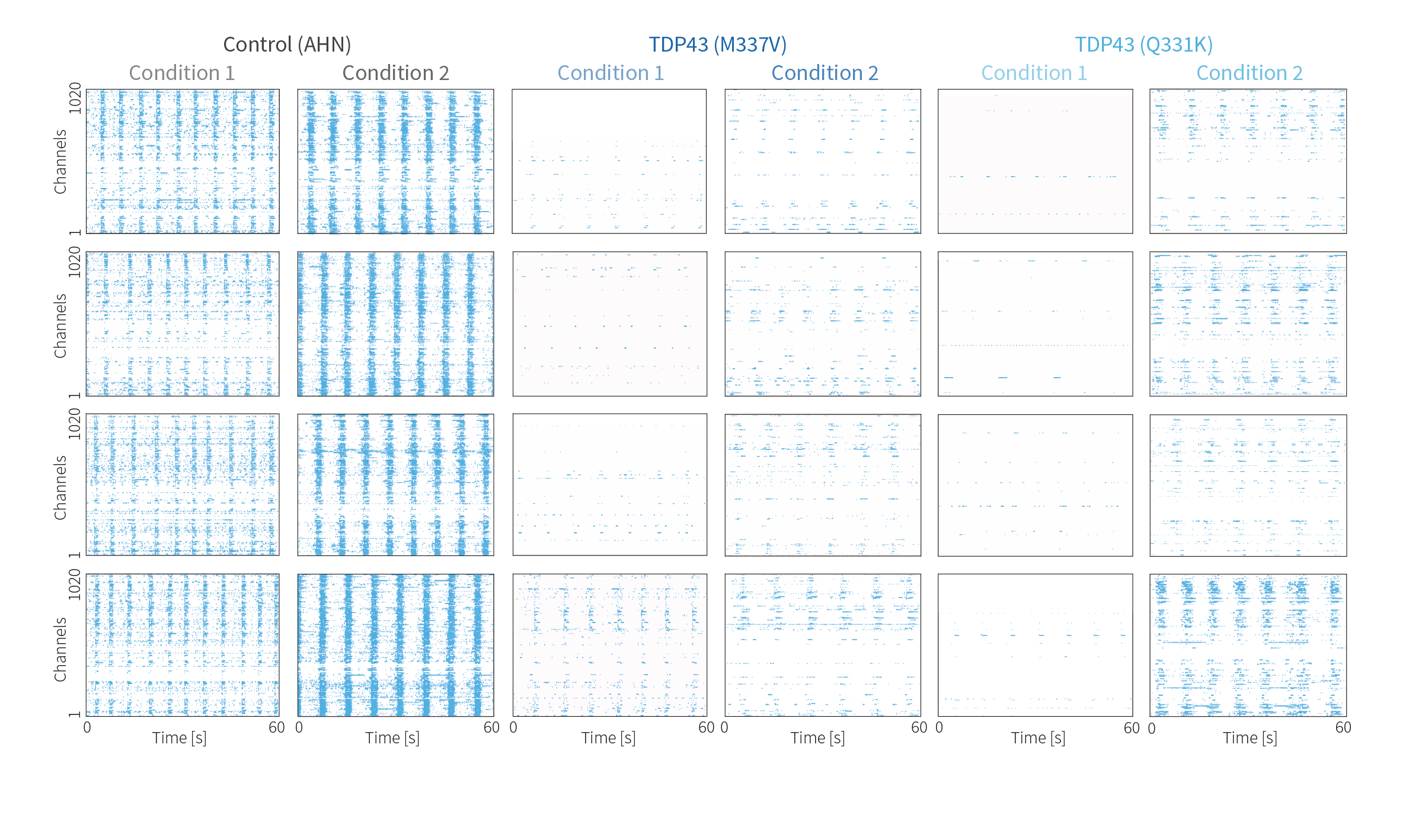
.avif)
.avif)
